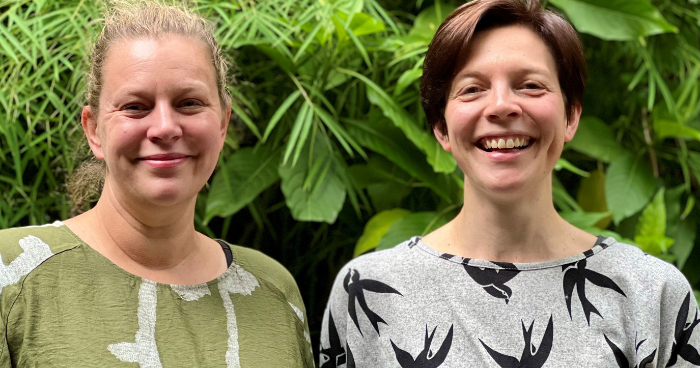New framework shows how animals can help designers create technologies for a better life
University of Melbourne researchers have joined with legendary zoo designer Jon Coe to help ensure animals are actively involved in the development of technologies designed for them – putting animals at the heart of the design process for their improved wellbeing.
Emerging technologies have significant potential for improving the lives of animals in many contexts, ranging from animal shelters and veterinary hospitals, to working dog kennels, farms, zoos and wildlife sanctuaries. But there are also potential risks for animals’ quality of life.
These sectors are rapidly increasing their use of interactive enrichment, smart environments and animal-centric devices such as wearable tracking devices, interactive feeders, digital games and automated milking machines. However, the rapid developments, combined with better awareness of animal sentience and more informed community attitudes, have created a need for a scientifically-grounded understanding of what animals need and want.
To provide evidence-based guidance, Dr Sarah Webber, from the Human-Computer Interaction group in the Faculty of Engineering and Information Technology, and animal welfare expert Dr Mia Cobb, from the Animal Welfare Science Centre in the Faculty of Veterinary and Agricultural Sciences, have developed guidelines with Melbourne-based zoo expert Jon Coe – who has designed spaces for zoos, aquariums and national parks around the world – to help ensure new technologies are designed appropriately with and for animals, to improve their care.
Their paper 'Welfare through Competence: A Framework for Animal-Centric Technology Design' has just been published in the prestigious open access journal ‘Frontiers in Veterinary Science’.

Drs Mia Cobb and Sarah Webber.
The Framework is grounded in contemporary animal welfare science, established technology design practices and applied expertise in animal-centred design. It offers a theoretical foundation and practical agenda for creating technologies that support a good life for animals, reflecting the ‘Five Domains of Animal Welfare’ model – a widely adopted, science-based tool for assessing animal welfare, encompassing: nutrition, environment, health, behaviour and mental state.
“Our proposed framework shows how animals can be agents in their own lives and have a say in shaping technology that offers them a better way of life. This can be achieved with animals in various contexts,” Dr Cobb said.
A fundamental imperative of the Framework is to have animal-centric goals where applications are designed for the animal’s needs, welfare and competencies, so technological interventions promote life-long mental and physical wellbeing for animals.
“The starting point is, the animal comes first,” Dr Cobb said.
“We can’t design new technologies for animal care through the human lens, or society will be going backwards. We need to prioritise what’s most useful to each specific animal with consideration for their individual, group and environmental context.”
Dr Webber said technology designers need a user-centred, iterative design process, “where animals are a stakeholder and central in the design process”.
“The focus is on giving animals more control over their choices, to build skills, such as find food, shelter and complexity, which can be hard to achieve in captivity,” Dr Webber said.
“Variety, complexity and interaction can help animals build up their skills and enjoy a better quality of life.”
Species-specific strategies and interventions could include the animal engaging in activities to access their food, having a varied and responsive environment, additional sensory stimuli, and some degree of independent control over their lives.
With a background in the design of digital technologies, Dr Webber spent several years working with orangutans at the Melbourne Zoo researching their use of technologies and human-animal interactions.
“Our cross-disciplinary perspectives helped achieve a comprehensive framework,” she said. “It was a tricky problem, but collaborating together made hard work feel like fun.”
Read more:
‘Welfare through Competence: A Framework for Animal-Centric Technology Design,’ Frontiers in Veterinary Science.